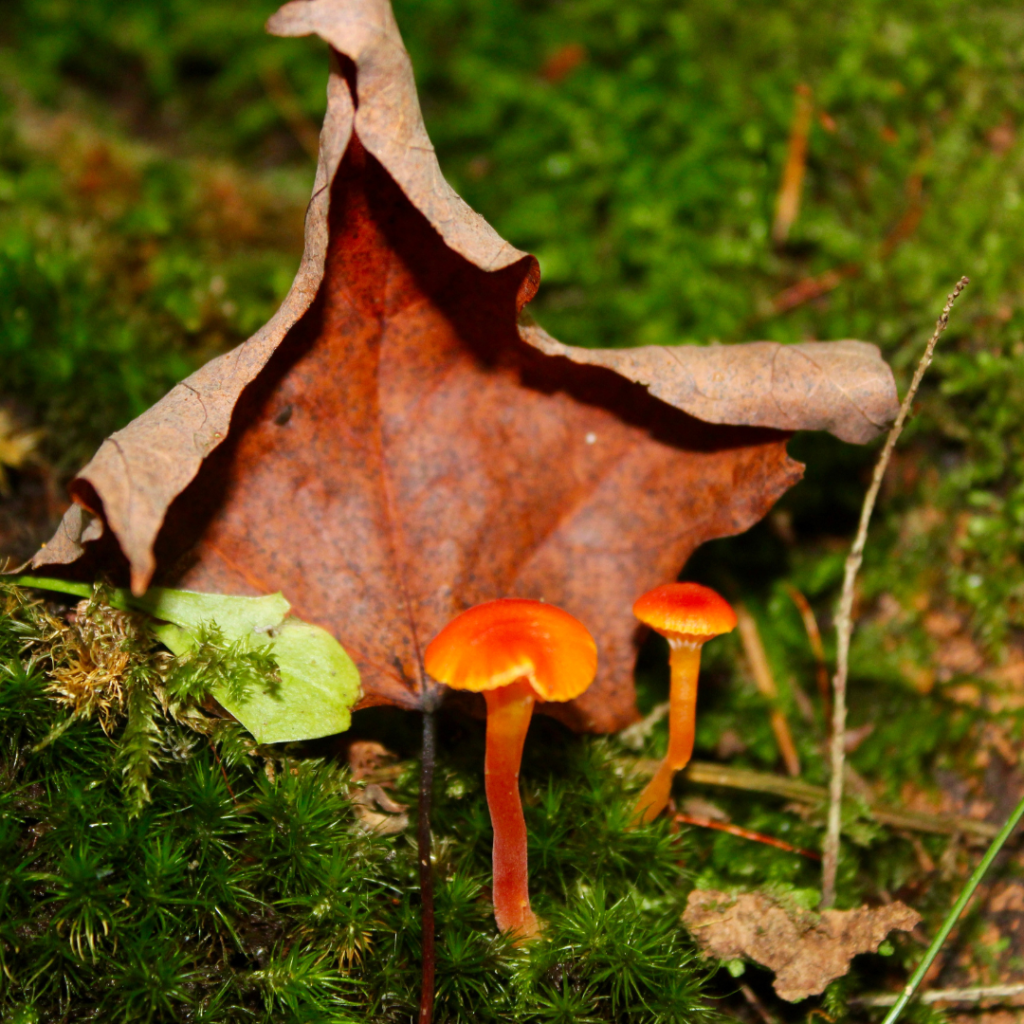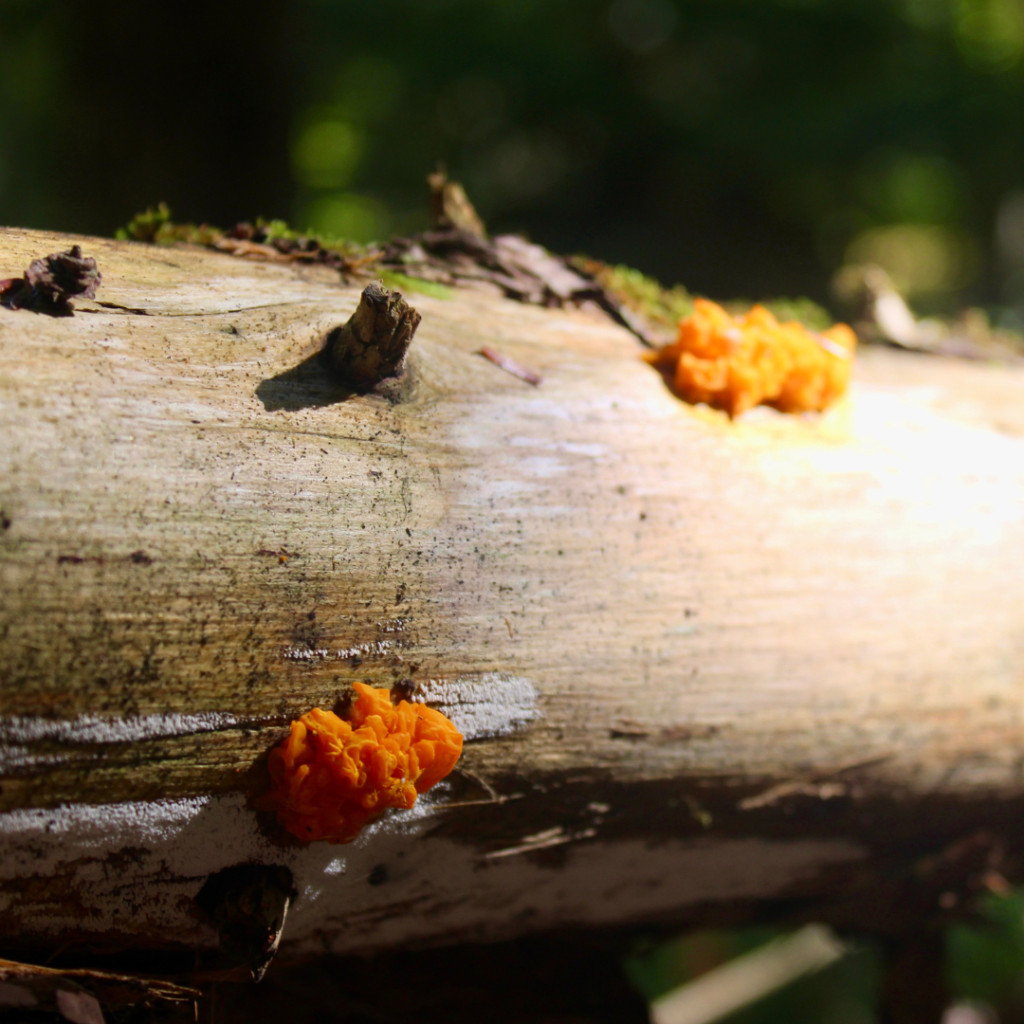As fall settles across Orillia and the vibrant leaves catch our attention, fungi quietly emerge in the forests of Grant’s Woods Nature Reserve. These fascinating organisms, more commonly known as mushrooms or toadstools, thrive in the cooler, damper conditions of autumn.
Fungi are neither plants nor animals—though they are often mistaken for plants. Unlike plants, fungi don’t photosynthesize, meaning they don’t get their energy from the sun. Instead, they absorb nutrients from organic matter, playing a crucial role in ecosystems worldwide. What makes fungi even more remarkable is how they interact with their environment. They aren’t just decomposers but are also integral to the health and function of entire ecosystems, forming vital relationships with plants and other organisms. Ontario is home to over 5,000 species of fungi, many of which can be found right here in the Couchiching region.
Note: The fungi in the following images are not all identified with absolute certainty. Even those that are identified represent an attempt, as fungi can be difficult to categorize due to their many changing appearances.
The Two Roles of Fungi in Ecosystems
Fungi contribute to forest health in two key ways: through saprotrophic and mycorrhizal processes.
Saprotrophic fungi act as nature’s recyclers, composting dead organic matter such as leaves, wood, and even animal remains. They accomplish this by secreting powerful enzymes that break down complex organic compounds like lignin and cellulose—the tough components in wood and plant matter—into simpler forms that they can absorb for nourishment. In doing so, they release essential nutrients back into the soil, making them available to plants and other organisms. The mushrooms you see growing on decaying logs, are saprotrophic fungi. These fungi are constantly working to recycle nutrients, keeping the forest floor fertile and supporting the growth of new plants.



Mycorrhizal fungi, on the other hand, form mutualistic relationships with living plants. These fungi connect with plant roots, creating a vast underground network called mycorrhizae. In this mutually beneficial relationship, the fungi act as extensions of the plant’s root system, helping the plant absorb water and key nutrients like phosphorus and nitrogen from the soil. In return, the fungi receive sugars that the plant produces during photosynthesis, which they need to grow and survive. Many mushrooms may be mycorrhizal, contributing to the long-term health of forests. Without these partnerships, many trees and plants would struggle to thrive, as mycorrhizal fungi significantly enhance their ability to take up nutrients.



The Hidden “Wood Wide Web”
Perhaps the most fascinating aspect of mycorrhizal fungi is the network they form beneath the forest floor. These underground connections, often referred to as the “Wood Wide Web,” allow trees to share resources with one another. Through this network, older trees can help support younger ones by transferring nutrients and water, especially during times of stress. Mycorrhizal fungi create a sophisticated system of communication and nutrient exchange that is crucial to the resilience of forest ecosystems. Scientists are only beginning to understand the full extent of these interactions, but they reveal how interconnected and cooperative nature can be.


Diversity and Importance
Fungi come in an incredible variety of shapes, sizes, and colors. A walk through Grant’s Woods Nature Reserve might reveal orange jelly fungus clinging to a fallen log, shelf fungi stacked along tree trunks, or puffballs scattered along the forest floor. Each species has its own function, whether it’s breaking down deadwood or forming relationships with living plants.
It’s important to remember that while some fungi are edible, others are highly toxic. Distinguishing between safe and dangerous species requires expert knowledge, which is one of the reasons why The Couchiching Conservancy prohibits foraging on their properties. By leaving fungi where they grow, you protect not only yourself but also the critical roles these organisms play in the ecosystem.



Conservation and Fungi
The health of our forests relies on a delicate balance of species, with fungi playing a crucial part. By protecting spaces like our nature reserves, Couchiching Conservancy ensures that fungi, along with countless other organisms, can continue to thrive. These natural areas offer a glimpse into the complex relationships that sustain life, from towering trees to the smallest fungi beneath the soil.
If you’re already supporting Couchiching Conservancy, thank you for helping to protect these vital ecosystems. If you’d like to get involved through membership, donations, or volunteering, please don’t hesitate to reach out or click the links below.
Article by: Jocelyn Trudell, Engagement Organizer

